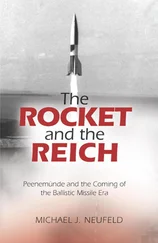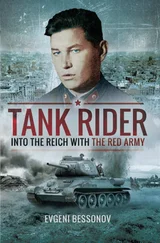James Becker - Echo of the Reich
Здесь есть возможность читать онлайн «James Becker - Echo of the Reich» весь текст электронной книги совершенно бесплатно (целиком полную версию без сокращений). В некоторых случаях можно слушать аудио, скачать через торрент в формате fb2 и присутствует краткое содержание. Жанр: Триллер, на английском языке. Описание произведения, (предисловие) а так же отзывы посетителей доступны на портале библиотеки ЛибКат.
- Название:Echo of the Reich
- Автор:
- Жанр:
- Год:неизвестен
- ISBN:нет данных
- Рейтинг книги:3 / 5. Голосов: 1
-
Избранное:Добавить в избранное
- Отзывы:
-
Ваша оценка:
- 60
- 1
- 2
- 3
- 4
- 5
Echo of the Reich: краткое содержание, описание и аннотация
Предлагаем к чтению аннотацию, описание, краткое содержание или предисловие (зависит от того, что написал сам автор книги «Echo of the Reich»). Если вы не нашли необходимую информацию о книге — напишите в комментариях, мы постараемся отыскать её.
Echo of the Reich — читать онлайн бесплатно полную книгу (весь текст) целиком
Ниже представлен текст книги, разбитый по страницам. Система сохранения места последней прочитанной страницы, позволяет с удобством читать онлайн бесплатно книгу «Echo of the Reich», без необходимости каждый раз заново искать на чём Вы остановились. Поставьте закладку, и сможете в любой момент перейти на страницу, на которой закончили чтение.
Интервал:
Закладка:
Bronson nodded. “I know they developed jet engines for their fighters, and of course there were the V1 and V2 missiles that they fired at London. I suppose they were classed as ‘vengeance weapons,’ because of the ‘V’ designation?”
“Exactly. But the Nazis had far more interesting and exotic devices up their sleeve. Their problem was that by that time they’d lost air superiority in the skies over their own country, and the Allied bombing raids were doing enormous damage to their airfields and especially to the factories that were turning out military hardware. But one of the odd things about this period of the war was that despite all this bombing, Germany’s war production actually continued to increase.”
“I didn’t know that,” Bronson admitted. “How did they manage it?”
“It was all down to a man named Albert Speer.”
“I’ve heard of him. He was one of Hitler’s ministers, wasn’t he?”
“You’re right. In nineteen forty-two he was appointed Minister of Armaments and War Production, and as Allied bombs rained down on Germany night after night, he came up with a radical solution. Because the factories on the ground were no longer safe, he decided to move them. But instead of simply relocating them to other parts of Germany, he put them underground.”
“Underground? That must have been an enormous job. You mean the Germans dug tunnels?”
“It was a huge undertaking, without question, but it wasn’t the Germans who were doing the work. Because of the concentration camps, they had an enormous force of slave laborers-hundreds of thousands, even millions, of people, who could be quite literally worked to death in the most appalling conditions. And as soon as one man died, they simply dragged in another and forced him to take his place. They didn’t need to supply safety equipment or proper clothing or masks or anything. In many of the construction sites, the SS doctors estimated that a fresh concentration camp prisoner would have a working life of as little as six weeks, working twelve-hour shifts with the most basic possible rations of food and drink. In several cases, according to the testimonies of the handful of people who managed to survive, prisoners were marched into the tunnels and only left them when they died, their bodies hauled out and dumped in a mass grave.”
“Horrendous,” Bronson muttered, “simply horrendous.” He’d decided not to mention what he’d seen at the house-the chilling sight of Marcus in full SS regalia-for the moment.
“It was,” she agreed, her voice bitter, “but it was also very efficient, and the Nazis were nothing if not efficient. Working prisoners to death not only meant that their construction projects proceeded quickly, but it also saved them the price of a bullet or the cost of a canister of poison gas.”
“So how many of these tunnels are you talking about?” Bronson asked.
“It was one of the largest projects in the history of mankind,” Angela replied. “Nobody knows for sure exactly how many underground facilities were built, or even planned, but even before the end of the war the Allies knew of at least three hundred and forty underground sites and, according to the records recovered after the end of the conflict, over four hundred sites had been given code names. But in fact there were far more than that. Plans held in the German Ministry of Armaments referred to some eight hundred plants in all. Work on them started in the summer of nineteen forty-three, when Allied air raids began inflicting enormous damage on Germany, and Albert Speer gave the go-ahead for the project, with Hitler’s blessing.
“I suppose it’s also worth saying that the idea of having underground facilities wasn’t exactly novel. From as early as the mid-nineteen thirties, the Nazis began creating massive oil and fuel tanks underground. One of these-it’s near Bremen-is still in operation today. There are eighty tanks there, each made of high-quality shipbuilding steel surrounded by a concrete jacket about a meter thick. Each tank holds four thousand cubic meters of fuel. They’re absolutely massive.”
“Well, underground storage tanks are quite common, and have been for many years,” Bronson commented. “When you’re dealing with potentially explosive liquids, burying them is often quite a good plan.”
“I know. But actually the tanks were only a very small part-though an important part-of the project. The biggest and most significant plants were those used for manufacturing, rather than just for storage. The Nazis built an underground aircraft factory at Kahla in Thuringia, using foreign slave laborers who worked twelve-hour shifts and who were told when they arrived there that they would be worked until they dropped dead. That place was used to manufacture the Messerschmitt Me 262 jet fighter, and the plan was to build twelve hundred aircraft there every month, a huge output that absolutely could have turned the tide of the Second World War. That one factory, if it had reached full production, could have produced enough aircraft to drive the Allied bombers and fighters from the skies of Germany. The intention was to create almost twenty miles of tunnels inside the mountain, with four huge subterranean halls, covering around twenty-seven thousand square meters, where the actual manufacturing would take place. By the end of the war, almost half of the internal construction had been completed, and the first aircraft took off from Kahla in February nineteen forty-five. And it was, as I said before, very efficient. The aircraft were assembled in the halls, then they were taken out of the mountain through the tunnels, hauled up to the top in a sloping elevator, and would then take off from a runway the Nazis had constructed on the top of the mountain. Luckily for us, only a few of these Messerschmitts were completed and flown away, so they never became a major threat to Allied aircraft.”
Bronson took his eyes off the road for a second or two to glance across at Angela.
“That’s huge. Was that the biggest underground factory?”
Angela shook her head. “No, not by a long way, and some of them are still in use today. In Baden-Wurttemberg, down in the southwest of Germany, there’s a town named Neckarzimmern. There’s been a gypsum mine there since the early eighteen hundreds, over one hundred meters below the banks of the Neckart River. It was used as a dynamite factory in the First World War, and then after nineteen thirty-seven it became an ammunition dump. The various shafts inside it were expanded to accommodate its new role. Today, it’s a subterranean town. There’s a road network almost thirty-five kilometers long in there, and the various caverns occupy about one hundred and seventy thousand square meters of space. In nineteen fifty-seven, units of the German armed forces were first stationed there, and today over seven hundred people work underground, in the tunnel system, supplying parts and repairing equipment for the German army.”
“Okay,” Bronson said, “I understand that the Nazis turned into moles and burrowed into the hills and mountains, or rather their slave laborers did on their behalf, but you still haven’t told me why we’re heading for the Polish border, or what the ‘lantern bearer’ has to do with any of this.”
“Patience, Chris. To fully appreciate what I’m going to tell you about that, you need to understand a bit more about the Nazi secret weapon program, the Wunderwaffen. We talked about the so-called ‘vengeance’ weapons, the V1 and the V2. The V2 was developed by Werner von Braun at Peenemunde, though it wasn’t at first called that-it was designated the A4-and the first examples were ready for testing by early nineteen forty-three, and the weapon became operational in the summer of ’forty-four. The first V2 hit London on the seventh of September that year and after that the rockets became fairly regular and most unwelcome visitors to the capital. What’s not generally known is that this missile wasn’t built by the Germans, though it was undeniably designed by them.”
Читать дальшеИнтервал:
Закладка:
Похожие книги на «Echo of the Reich»
Представляем Вашему вниманию похожие книги на «Echo of the Reich» списком для выбора. Мы отобрали схожую по названию и смыслу литературу в надежде предоставить читателям больше вариантов отыскать новые, интересные, ещё непрочитанные произведения.
Обсуждение, отзывы о книге «Echo of the Reich» и просто собственные мнения читателей. Оставьте ваши комментарии, напишите, что Вы думаете о произведении, его смысле или главных героях. Укажите что конкретно понравилось, а что нет, и почему Вы так считаете.












